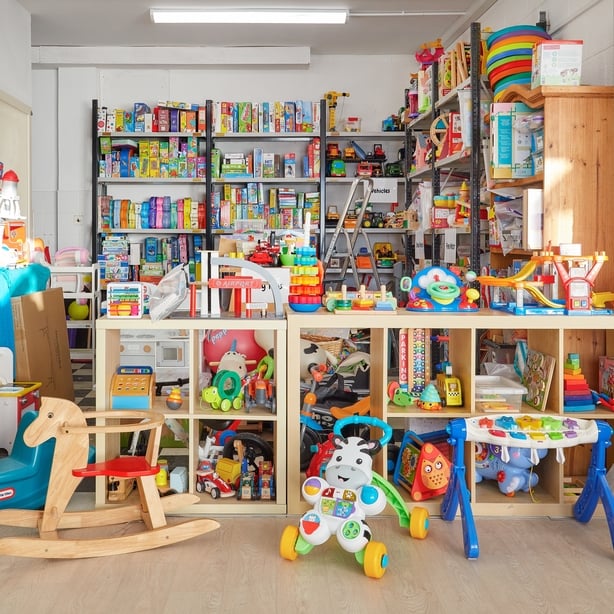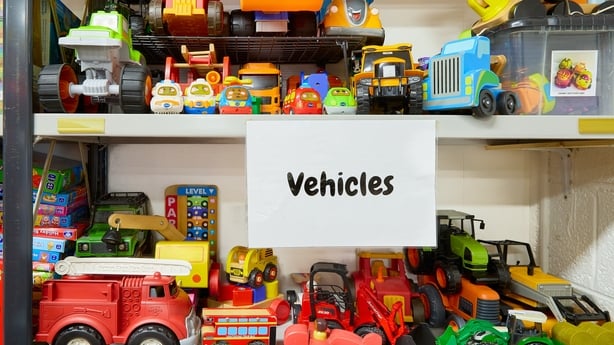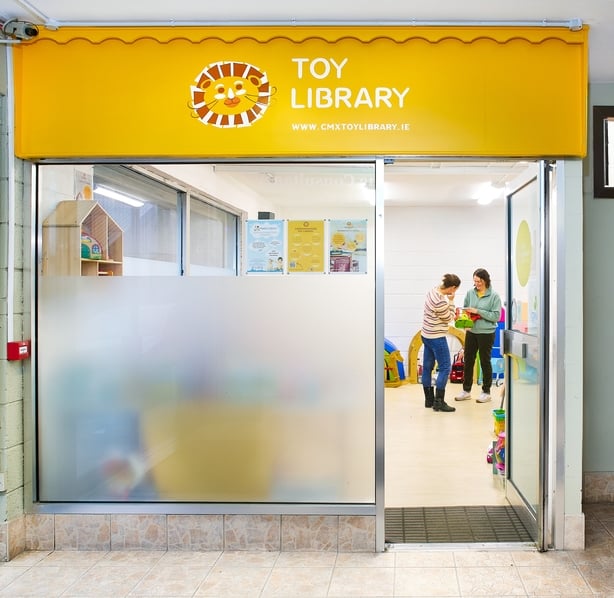The toy industry is the most plastic-intensive industry on the planet, with a whopping 90% of toys on the market currently thought to be made in full or partly from plastic.
Since there are limited means to recycle these toys, when they are outgrown or reach the end of their useful life, more often than not, they end up in a landfill.
That's where toy libraries come in.
A toy library works very much in the same way as a regular library. Members sign up and borrow toys for a set period of time, fostering a sense of community and supporting a zero-waste approach to parenthood.
This saves families money, reduces clutter at home, and promotes play, which is crucial for healthy child development and positive outcomes.

If you have never come across the concept of a toy library before, that could be because there are only a very small handful in Ireland. But that’s about to change, thanks to a new national association, Toy Libraries Ireland, which was set up to grow the movement nationally, as well as to promote the toy library services which already exist.
"There has never been a greater need for community toy libraries," said Jill Kennon, CEO of Carrickmacross Toy Library and spokesperson for Toy Libraries Ireland.
"We are proud and excited to lead the national movement for community toy libraries here in Co Monaghan," she added. "Our ultimate goal is that every child in Ireland will have access to a facility similar to ours."
If you don’t have a toy library near you, why not consider setting up one of your own?

Here are seven easy steps to starting a community toy library:
1. Find your tribe – be it a group of local parents, Tidy Towns or a zero waste collective, finding similarly motivated individuals can provide the momentum and support to help get your toy library off the ground.
2. Research the market – where is your nearest toy library? Check out Toy Libraries Ireland’s interactive map. If there isn’t one nearby, is there interest among families locally in accessing one? How far are people willing to travel? What kind of toys would they be most likely to borrow? What opening hours best suit? How many families could potentially avail of your service? These are the kind of questions it’s worth asking through a quick survey via relevant social media or WhatsApp groups.
3. Decide on a location – you may not need a permanent base. Most toy libraries in Ireland started off with ‘pop-up’ premises, be they parent and toddler groups, church halls or zero waste hubs. As you grow in size, access to premises and funding will grow, too.
4. Gather your stock – "We started very simply with a bake sale to raise money to rent a room in a local community building once a week, and asked people to donate toys at the same time. Be specific about what you are looking for, as you will likely get lots of rubbish in addition to the good stuff. We do not accept soft toys, for example, and we ask for sturdy toys, suitable for our target age range and in good, clean, complete condition," advises Kennon.

5. Raising funds – consider approaching local companies for sponsorship. Access to grants becomes a lot easier if you register with your local Public Participation Network (PPN). If you eventually decide to go down the registered charity and/or CLG route, that opens further doors to funding. Some toy libraries charge a small membership fee to cover their running costs.
6. Cataloguing your collection – this only becomes necessary as your collection and membership grow. Sites such as Lend Engine offer a free basic package for up to 100 toys, where you can catalogue items and manage loans.
7. Promoting your toy library – get the word out via social media, local parenting and environmental groups and your local authority. Local newspapers and radio stations are always looking for positive community stories, and it should be relatively easy to place a piece, particularly if you can put somebody forward for an interview and/or provide decent images alongside. If there are children in images, always check that you have the parents’ permission to publish.
Register to receive a free comprehensive guide to setting up a non-profit community toy library in Ireland at toylibrariesireland.org.
